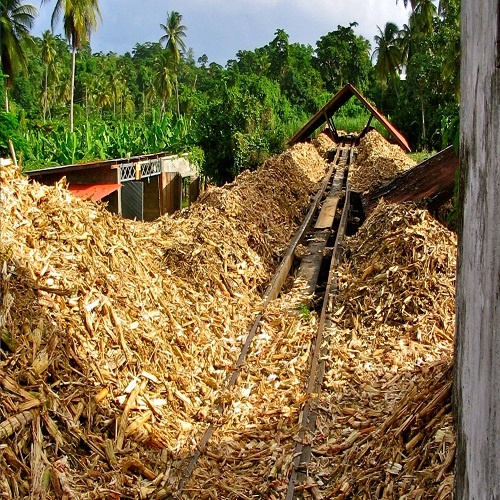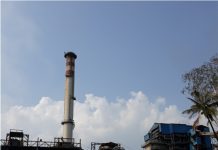Introduction
Xylitol, a sugar alcohol derived from various biomass sources, shows significant promise as a natural sweetener with numerous health benefits. This article provides a comprehensive analysis of xylitol production, its advantages, challenges, and the future prospects for commercialization, with a specific focus on its production from bagasse in India. Xylitol is emerging as a leading contender in the quest for healthier sweeteners. This sugar alcohol, derived from various plant-based materials, offers a sustainable alternative to traditional sugars. The article delves into the production process of xylitol, its advantages, the challenges it faces, and its promising future for commercialization, particularly emphasizing the utilization of bagasse, a sugarcane byproduct, in India.
Understanding Xylitol
Xylitol is a white, crystalline substance belonging to the polyalcohol family. Known for its sweetening properties and potential benefits for dental health, xylitol has the molecular formula C5H12O5 and exists as a stereoisomer found naturally in some plants. Its name originates from the Greek word “ξύλον” (wood), reflecting its potential extraction from wood biomass. In the European Union, it’s designated as E967 and recognized for its possible dental health benefits, although more research is needed for conclusive evidence. Xylitol offers sweetness comparable to sucrose but with about 40% fewer calories.
Production Process
Xylitol production begins with lignocellulosic biomass, such as hardwoods, softwoods, or agricultural waste like bagasse. The process involves breaking down the biomass with acid (hydrolysis) to extract xylose, a sugar. This xylose is then purified using chromatography. Next, the xylose is hydrogenated into xylitol using a Raney nickel catalyst in a chemical process. While fermentation using microorganisms like Candida tropicalis is an alternative method, it’s generally less economical than chemical methods. However, enzymatic hydrolysis is gaining traction as a more sustainable approach.
Technological Innovations
Recent advancements in xylitol production have focused on enhancing efficiency and sustainability. The Indian Institute of Technology in Guwahati has developed an innovative method utilizing ultrasound during fermentation. This approach significantly reduces fermentation time (e.g., from 48 hours to 15 hours) and increases xylitol yield by nearly 20%. It offers advantages such as faster production, improved efficiency, and reduced reliance on harsh chemicals. Additionally, ongoing research aims to optimize enzyme efficiency for better xylose conversion, enhance pretreatment methods to increase xylose yield from bagasse, and reduce overall production costs.
The outlook for technology readiness in xylitol production over the next five years appears promising. Advancements in biomass conversion technologies suggest a future leaning towards fermentation during xylitol production, with xylitol being one of the most valuable renewable chemicals obtainable from biomass.
Regulatory Landscape
Globally, xylitol production and use are subject to food safety regulations by bodies like the Codex Alimentarius Commission. Specific regulations vary by country. In India, the Food Safety and Standards Authority of India (FSSAI) governs xylitol under its sugar substitutes regulations. Additionally, environmental regulations for biomass processing, including those related to bagasse utilization, fall under the purview of the Ministry of Environment, Forest and Climate Change (MoEFCC).
Health Benefits and Concerns
Xylitol boasts several health benefits. Unlike sugar, it has a minimal impact on blood sugar levels, making it suitable for diabetics. Its sweetness comes without the cavity-causing effects of sugar, promoting dental health. However, like other sugar alcohols, xylitol can cause digestive discomfort if consumed in excess.
Sustainability Analysis
Xylitol production from bagasse offers a sustainable alternative to traditional sources. Bagasse is a readily available agricultural waste product, diverting it from landfills and promoting circular economy practices. Life cycle assessments suggest that bagasse-based xylitol has a lower environmental footprint compared to corn-derived xylitol due to reduced land use change and energy consumption.
Case Studies
Several companies worldwide are successfully producing xylitol from bagasse. For instance, Xylitol India utilizes sugarcane bagasse to manufacture xylitol, showcasing the commercial viability of this approach.
Consumer Perception and Market Acceptance
Consumer perception of xylitol is generally positive, with growing awareness of its health benefits. However, its slightly higher price point compared to sugar can be a barrier. As consumers become more informed about sustainability, bagasse-derived xylitol may hold increased appeal due to its eco-friendly production.
Research and Development
Research efforts are ongoing to improve the efficiency and sustainability of xylitol production from bagasse. This includes developing new technologies for pre-treatment of bagasse to enhance xylose yield and optimizing fermentation processes for higher xylitol production.
Market Readiness and Challenges
While xylitol production from bagasse has reached a technology readiness level of 7-8, indicating advanced development, several challenges persist. Achieving cost parity with traditional sources remains a primary concern. Further optimization of production processes, including enzyme efficiency and pretreatment methods, is necessary to enhance cost-effectiveness. Additionally, establishing a robust market demand and educating consumers about the sustainability benefits of bagasse-based xylitol are essential for widespread adoption. Government support through policies promoting bio-based products and sustainable practices can provide incentives for companies to invest in this technology. Beyond human consumption, potential new markets for xylitol include bioplastics.
Commercialization Status
Currently, commercial production of xylitol from bagasse remains limited, with only a few companies operating smaller-scale plants (typically producing tens to hundreds of tonnes per year) as pilot demonstrations. These plants serve as early demonstrations of the technology’s feasibility. However, challenges such as technology optimization, economic viability, and market uncertainties hinder large-scale commercialization. Despite these limitations, ongoing research efforts and market trends indicate a positive trajectory for xylitol production from bagasse. A typical plant capacity for commercial xylitol production using any feedstock can range from 10,000 tonnes per annum (KTPA) to over 50,000 KTPA. There’s no significant difference in plant capacities between India and the global market. A 10,000 KTPA xylitol plant might require roughly 40,000 to 50,000 tonnes of bagasse annually.
Alternative Feedstock
Apart from bagasse, other potential feedstocks for xylitol production include corn cobs, rice straw, wheat straw, and nut shells. However, the efficiency of xylose extraction and overall xylitol yield might vary depending on the chosen feedstock.
Capital Expenditure (CAPEX) and Returns
The estimated CAPEX for setting up a 10,000 KTPA xylitol production plant can range from $50 million to $100 million. Data on specific returns (EBITDA, ROCE) for xylitol production from bagasse is limited due to the nascent stage of commercialization. However, with increasing market demand and potential cost reductions, the industry is expected to offer attractive returns.
Conclusion
Xylitol production from bagasse represents a promising opportunity to add value to the sugar industry’s byproducts and contribute to sustainability. By addressing key challenges, leveraging technological innovations, and capitalizing on market trends, xylitol has the potential to become a commercially viable and widely adopted natural sweetener in the near future. Continued collaboration between industry, academia, and government stakeholders is essential for driving progress and realizing the full benefits of bagasse-based xylitol production.
Disclaimer: The views and opinions expressed in the article by Dilip Patil, Managing Director of Samarth SSK Ltd., are solely his own.













